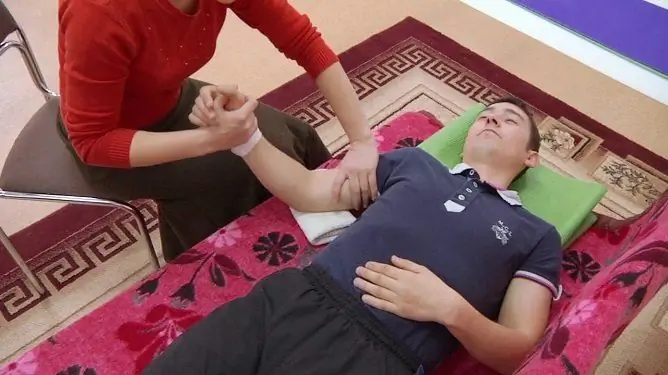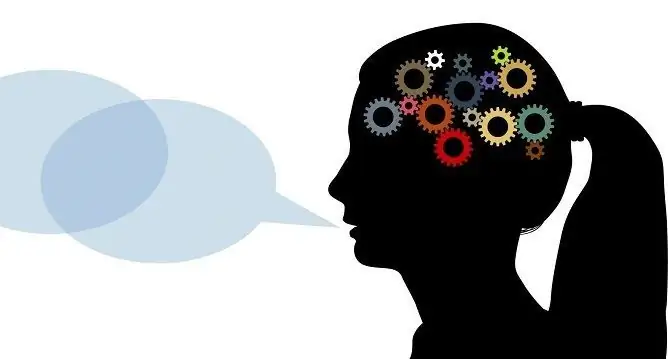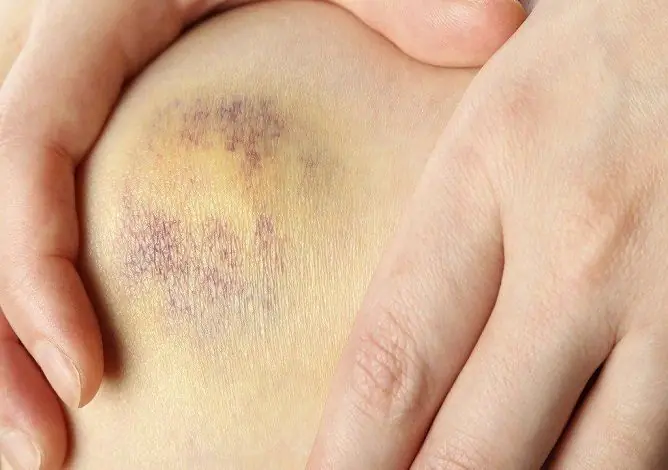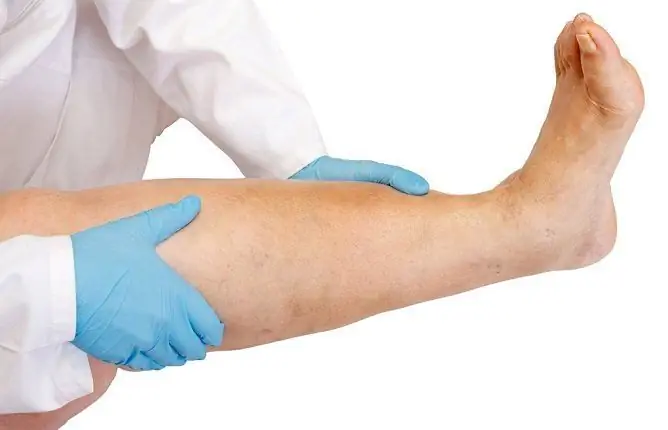- Author Rachel Wainwright [email protected].
- Public 2023-12-15 07:39.
- Last modified 2025-11-02 20:14.
Rehabilitation after a stroke at home: restoration of motor functions, memory and speech
The content of the article:
- Principles of Stroke Rehabilitation at Home
- Exercises to restore motor function
- Further restoration of motor activity
- The use of simulators after a stroke
- Recovery of speech and memory at home
- Video
Rehabilitation after a stroke at home is a prerequisite for ensuring the patient's maximum recovery. When a stroke affects those parts of the motor cortex that are responsible for the motor function of the limbs, there is a high probability of developing paralysis or paresis. Disorders of movement, coordination and speech are common complications of stroke; they occur in one form or another in more than half of patients.

Post-stroke rehabilitation at home can be no less effective than in a hospital
In many cases, these violations are not irreversible; post-stroke rehabilitation is called upon to eliminate them completely or at least partially. To achieve maximum success, restorative procedures should begin as early as possible, as soon as the general condition of the patient allows. After the patient is discharged home, the treatment continues - rehabilitation measures must be carried out for several months.
At first, the lessons at home are conducted by a rehabilitation specialist, then he can teach simple rehabilitation techniques to home patients, and then only control the process, adjusting the program if necessary.
Principles of Stroke Rehabilitation at Home
Rehabilitation is based on the feedback effect - the more a certain part of the peripheral nervous system works, the more developed (or the faster it is restored) the center that controls this part. Therefore, exercises aimed at restoring speech, facial movements, fine and gross motor skills have a beneficial effect on brain activity in general.
Rehabilitation at home is carried out in accordance with a program drawn up by a specialist, taking into account the individual characteristics of the patient. The main tasks of the recovery course:
- prevention of pressure sores;
- restoration of normal blood flow - areas of the brain affected by a stroke should be intensively supplied with blood for the maximum possible recovery and prevention of relapse;
- decrease in increased muscle tone - after a stroke, the muscles are in a state of spasm, paralysis, so it is difficult to move them, and the volume of movement is sharply reduced. Relaxing exercises and massage are designed to fix this;
- the resumption of fine motor skills - occurs through exercises aimed at working the fingers and performing delicate operations with small objects.
Classes at different stages of rehabilitation differ in duration - at first they are short and mostly passive. Gradually, the time for their implementation increases, and the patient, as he recovers, more and more actively participates in the rehabilitation process. It is very important that the sessions are regular - this is the main condition for their effectiveness. On average, one movement exercise session takes 15 minutes and is done twice a day.
Physical exercises are usually preceded by therapeutic massage. It includes not only the movements of the masseur directly, but also passive loads. To implement them, the patient needs to increase the tension of one or another muscle, literally contracting each small muscle separately. Massage promotes the renewal of brain-body nerve connections, is an excellent foundation and a prerequisite for full-fledged exercise.
It is necessary to continue to exercise until all the lost functions return, or until the possibilities for recovery are exhausted - the doctor assesses this, but the main sign is the futility of prolonged persistent rehabilitation measures. After an extensive stroke, full recovery may not occur - after an ischemic stroke and rehabilitation at home, about 60% of patients recover full or partial work capacity. In patients with hemorrhagic stroke, this indicator is slightly higher, despite the fact that the disease is more severe. This is due to the earlier initiation of therapy.

Massage helps restore brain-body neural connections
Bedridden patients need the help of outsiders - medical personnel or relatives. They need help with the exercises and will soon be able to repeat them on their own.
Important note: you need to focus on the condition and capabilities of the patient. For example, if the left side is paralyzed, then one should start with movements of the limbs on the right side, if the paralysis is complete, then with movements of the eyelids.
Every stroke patient should know: recovery from a stroke at home, with sufficient persistence and consistency, is often not inferior in the effectiveness of inpatient rehabilitation.
Exercises to restore motor function
Exercises to restore movement in the limbs:
- flexion and extension of the arms and legs in the joints. Start the exercise on the affected side (if it is not paralyzed);
- rotational movements - have more complex biomechanics, they are suitable for patients who successfully complete the previous exercise. Different elements can be combined depending on the patient's needs;
- hand exercises - stretching. Slowly and gently pull the patient's hand towards themselves, avoiding pain;
- exercises with a rubber strip - the patient can stretch and twist it; you can tie one end to the bed and pull the other end with your hand or foot. The use of a brush expander is recommended;
- body movements - swinging from side to side, twisting, raising the legs. All this is done to the best of the patient's capabilities, in any range of motion convenient to him;
- exercises with the head of the bed - using it as a support, slowly pull up and push off from it.
We must also not forget about small muscle groups - attention should be paid to the movements of the muscles of the neck, eye muscles, fingers and toes. Any improvement in motor skills on the damaged side indicates the reversibility of the destructive process in the nervous system.
Further restoration of motor activity
Exercises for the legs and arms (exercise therapy) in patients able to sit and stand is distinguished by a large number of joints and muscle groups involved in the work:
- alternately raise each limb in a sitting position, followed by straightening in the knee joint;
- sitting in bed, put your hands on and try to tear the body a few millimeters from the surface, then slowly lower it;
- lift a small object (cube, matchbox) from the floor, return it to its place with the greatest possible accuracy;
- walk on tiptoe.
For men, due to their more developed muscles, exercises with small weights are recommended in the late recovery period, for example, dumbbells weighing up to 3 kg, small weights (you can replace them with water bottles), as well as squats. For women, such exercises are also suitable, but the load should be smaller.
In the late recovery period, Pilates, yoga, walking are recommended - those types of physical activity that can be done at home.
The use of simulators after a stroke
Simple functional exercises are available to everyone, but sometimes the specifics of brain damage require a special approach. Then, based on the indications, the therapist assigns classes on special simulators. These are mechanical devices that are designed with ergonomics and optimal biomechanics of movement in mind. Their convenience lies in the ability to set an accurately dosed load on a specific area of the musculoskeletal system. Exercises on the simulator are usually started when the patient can easily perform basic movements.

After a stroke in the recovery period, yoga may be recommended
The most popular are the following simulators:
- exercise bike - allows you to change many parameters during training, monitors the patient's pulse. Classes on it help to restore strength to the legs, coherence of movement of the lower extremities, improve circulation due to dynamic physical activity;
- exoskeletons are advanced rehabilitation tools that allow a special external structure to take on some of the weight and some of the physical activity of the body. Any movements become easier, while the muscles "remember" the sequence of movements, and blood circulation in the limbs improves;
- verticalizer - a special simulator for giving the human body a stable vertical position. It helps the muscles and vestibular apparatus to get used to this position again. When standing in a verticalizer, you can perform many other exercises, and when the patient gets stronger, continue to train without an auxiliary device;
- block simulators - allow you to finely vary the weight of the projectile, and under the supervision of a doctor, the patient can perform simple physiological movements with moderate weight.
The most popular exercise bike at home. Verticalizers and block trainers are commonly used in rehabilitation centers.
Recovery of speech and memory at home
Post-stroke rehabilitation necessarily includes exercises aimed at the restoration of cognitive functions and speech.
To restore speech, classes are prescribed with a speech therapist who comes to the house. First, the patient pronounces individual sounds without trying to combine them into words. Different groups of sounds are combined in different ways. Then the reading of simple words or even combinations of letters, associative tests, is added. The doctor speaks half a word, and the patient finishes behind him, and over time the length of the words increases.
Classes begin with the resumption of control over the muscles of the mouth and tongue - the patient pulls the lips forward as much as possible, then returns them to their original position. He moves his tongue clockwise and counterclockwise, reaches the palate, throws it back into the throat or pushes it as far as possible. You can also move your jaws, bite the upper and lower lip alternately. Singing (often chanting words are easier for the patient to pronounce) and reciting poetry are effective exercises.
Memory is restored and trained with special exercises under the supervision of a neuropsychologist. For example, memorizing objects is a good exercise in visual memory - one is taken from several objects on the table, and the patient remembers which thing has disappeared, while the number of objects gradually increases. A meaningful memory is developed by memorizing sequences of numbers or letters, which must be restored after a while; countdown, etc.
Medication is also used to improve cognitive abilities. The group of drugs indicated for post-stroke memory impairment includes nootropics that improve cerebral blood flow, vitamin therapy. Some folk remedies (blueberries, ginger, etc.) can also be effective, but they can be used only after consulting your doctor.

Blueberries are considered an effective remedy for the restoration of vision and memory.
The normal, fulfilling life after a stroke does not end. If you carefully follow all the recommendations, there is a high chance of restoring the lost functions. It is important to conduct classes systematically, monitor the patient's fatigue, take into account the individual characteristics of a particular clinical case and, most importantly, be patient. The success of rehabilitation measures largely depends on the support of loved ones and relatives.
The most effective rehabilitation is in the first three months after a stroke, then the rate of recovery decreases. A year after a stroke, the restoration of lost functions, as a rule, does not occur, so it is very important not to miss the favorable time.
Video
We offer for viewing a video on the topic of the article.

Nikita Gaidukov About the author
Education: 4th year student of the Faculty of Medicine No. 1, specializing in General Medicine, Vinnitsa National Medical University. N. I. Pirogov.
Work experience: Nurse of the cardiology department of the Tyachiv Regional Hospital No. 1, geneticist / molecular biologist in the Polymerase Chain Reaction Laboratory at VNMU named after N. I. Pirogov.
Found a mistake in the text? Select it and press Ctrl + Enter.






